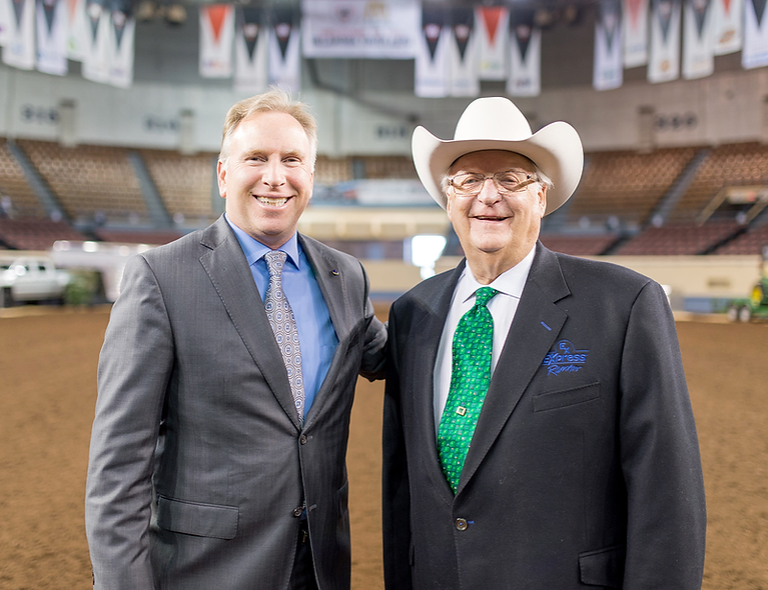Overcoming the mid-Campaign Stall
- Craig Clemons

- Feb 2, 2023
- 6 min read
Updated: Apr 14

You’ve launched your campaign and leadership gifts were ‘tee’d up’ for early and significant contributions and you are cruising through the campaign GIFT PYRAMID. Your campaign strategy is solid and your collateral/materials are impressive. Donations are coming in and It feels like all your hard work is finally paying off.
But, after that first wave of expected donations (Board Members, loyal supporters, Leadership Gifts developed in the quiet phase…), your campaign activity can wain and even stall. This is a bad dynamic for several reasons: a) incoming funds have stalled and you may have major project construction costs associated with funding ‘triggers’; b) you experience donor fatigue; c) you experience volunteer fatigue; d) you experience staff fatigue (relative to campaign activities); e) your community hears rumors that dollars have stalled relative to campaign progress. Using a popular phrase, ‘you’ve hit a wall’.
What you’re experiencing is called the mid-campaign lull, and it’s totally normal.
For successful short term fundraising campaigns, a typical rate of donations chart looks like this:

For most campaigns, there’s a higher rate of donations in the beginning and end, with a slight leveling out in the middle. In other words, most short-term campaigns experience a ‘slow down’ of incoming gifts in the middle of the campaign.
During this lull, there’s things you can do to boost donations and donor activity during your campaign. Here’s a look at our top 8 recommended strategies to help you boost donations:
1) FEATURE A NEW/UNEXPECTED DONOR

Using digital assets (much more nimble and affordable than traditional print media), blast out a story about a new, unexpected or significant donor which ‘infuses life’ back into your stalled campaign. Using your CRM to reach expanded/new target audiences, post/promote the story through web
sites, blogs, social media and e-newsletters.
2) FEATURE A SPECTACULAR MILESTONE
Again, using digital assets and connecting to stakeholders (Board, Committees), Campaign Donors, prospective Donors, local corporations, local Family Foundations and so on. Show audiences – whether they have reviewed the campaign pitch deck or not – that your initiative is intriguing philanthropists, making GREAT progress and you have hit a special monetary milestones.

3) SHARE USE CASE OUTCOMES (macro level)
Continue to ‘tell your story’ and promote your narrative by sharing how lives are impacted through incoming donations. Show prospective donors that dollars received by your nonprofit…are transformative. Monies are a) helping to cure cancer; b) delivering clean water to African villages; c) providing literacy to Title One students; d) delivering housing solutions to US Veterans, etc. Continue re-telling your story (and tying this back to your campaign’s case for support and giving opportunity).
4) SHARE USE CASE OUTCOMES (micro level)
Draw readers in on an emotional level! Tell a story of one main character whose life has been impacted by your organization, their conflict, and resolution. Interview a Case Manager or Program Director to give prospective donors an ‘inside glimpse’ of how they see lives changed every day through strategic programming. Show a photo of the happy constituent.

5) CONVEY STATISTICS
Along the line of ‘telling your story’, why not communicate some awesome statistics and remind stakeholders, donors and prospective donors that your organization is EFFECTIVE, EFFICIENT and RESULTS-ORIENTED…and that campaign dollars will absolutely EXPAND and AMPLIFY difference-making outputs. It is best to keep statistics in bullet form and conveyed in simple phrases (six words or less is best). Use simple percentages, numerics or averages to help communicate the message that donors’ dollars are correctly applied to the cause and funds are well stewarded.

6) INTRODUCE A MATCH
If you’re seeing that your donations have slowed, one of the best ways to suddenly boost donations is by introducing a match in the middle of your campaign.

A matching gift challenge (invitation) from a donor, foundation or corporation that matches all funds donated within a certain time frame works to inspire and engage your audience in a short period. This tactic usually spurs on or returns high donation rates.
Using your communication tools, count on matching gifts to immediately elicit project interest; this is often a surefire way to boost campaign interest and reboot momentum.
7) INTRODUCE A FLASH FUNDRAISER
Sometimes, major boosts in campaigns can be accomplished by introducing a flash fundraiser. A flash fundraiser is typically a 24-48 hour period with a fundraising goal that will help you get to a new milestone. Think of this as a mini-campaign inside your campaign. It doesn’t seem like just saying you’d like to raise $X amount in 24 hours would work, but flash fundraisers have proven to be wildly effective because it presents your audience with a challenge and time constraint, which heightens the sense of urgency.
What if your held a weekend ‘walk-a-thon’ aiming for $25,000 in team-associated fundraising?
What if your held a 24-hour crowd funder and post donors on a digital wall (graphic) which makes up a specific message? (e.g., End Cancer)
What if you choose a theme and a specific deadline around a micro fundraising goal within the campaign? (ex. Valentine’s Day for victims of domestic abuse).
The day of the blitz, send out a series of emails requesting donations. The emails should include an emotional story, appropriate imagery, and a call to action that expresses urgency.
8) ENGAGE BOARD MEMBERS
Yes. Your Board was involved with project due diligence, strategies, timeline, consultant choice and fundraising goals. But have they been active as strategic solicitors?

Plan a convenient session for several hours or ½ day, bring Board Members together and cover the salient points of the project’s goals, the campaign’s case for support, near-term donor solicitations and how Board Members might help organization
expand giving potential via their own personal network. If Board Members are uncomfortable soliciting a targeted prospective donor, use ROLE PLAYING with peer Board Members to a) alleviate anxieties; b) practice, practice, practice; c) correctly share the giving opportunity using the branded campaign tools.
9) REMEMBER THE 80/20 RULE
Reach out to your most loyal donors and fundraisers and thank them for their efforts so far! To know that you care that they care will go a long way to encourage them as they support you and move forward. Give them some personal insights into the project, the campaign, spectacular donors, key staff members and/or featured constituents.
Keep in mind, about 80% of your funds will be raised through donors who already know you, your organization and the impact you are already making. For the most significant donors, consider giving them a personal tour of on-site construction progress, meeting a highly-impacted constituent (and hear their personal story) or join you in a solicitation with another top-targeted philanthropist. These activities help your supporters understand the benefits of your organization and make them feel extra special; they become active advocates of your cause…connecting your campaign to their network of friends and fellow community leaders.
Within volunteerism, make sure you reach out to high performers and recognize them accordingly. Consider highlighting them in a blog or social media post.
10) INITIATE A THANK-YOU-THON
While in your mid-campaign slump, what better time to organize a tactical THANK-YOU-THON to reach out to your donors.
If you are a Greek organization, have active members a) contact donors and thank them for their contribution; b) contact alumni/prospective donors and illuminate the campaign’s impact/ask for a contribution.

If you are the Boys & Girls Club,
have club members either a) call the donor directly and tell them they are a difference-maker; b) produce a colorful masterpiece (with crayons or colored pencils) and have a staff member take a photo of the child with their art work.
E-mail or text this to the donor ensuring the ‘thank you’ message is genuine and aligned with campaign contributions.
If you are an NCAA organization, have student athletes write an insightful note to donor(s) [give them a templated script to aid in their message structure]; encourage them to highlight their academic accomplishments, athletic achievements and share best elements of being on the collegiate team.
Bottom line: The mid campaign lull isn’t something to dread, rather, it’s an opportunity to educate, inspire and re-engage your audiences. Mix it up. Err on over-communication. Keep your spirits high and express sincere thanks to those important soldiers around you during the campaign (Board Members, Committee Members, staff members, volunteers, consultants, architects, designer…). And have FUN!

Craig Clemons with Friend, Philanthropist and President/Founder/Board Chairman of Express Employment Professionals, Bob Funk, Sr.
Seeking expert assistance from seasoned professionals?
Contact Craig Clemons at craig@clemons-associates.com or one of our rock star associates for more details. Clemons & Associates is on standby to help you with brand identity, strategic messaging, campaigns, digital assets and programs/projects.



